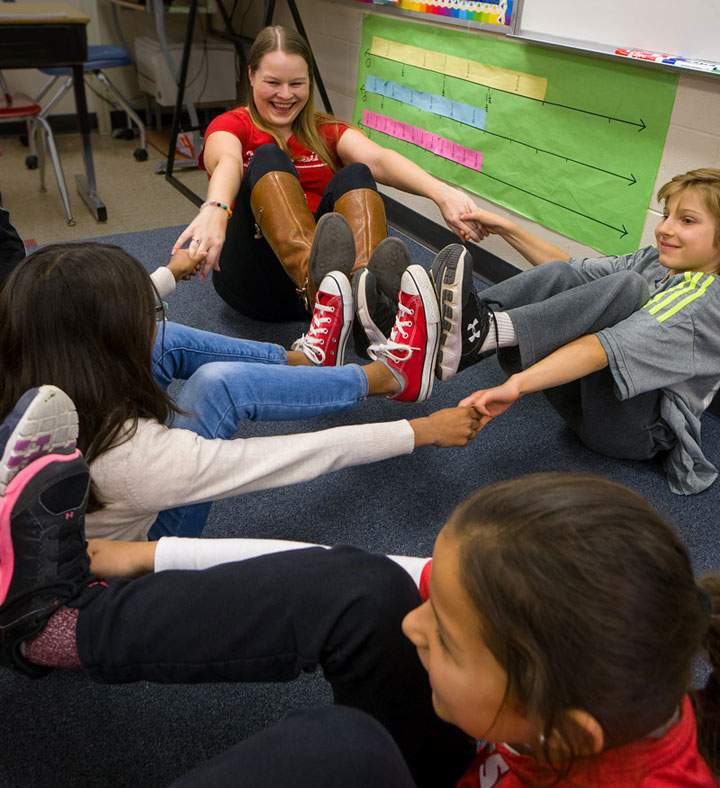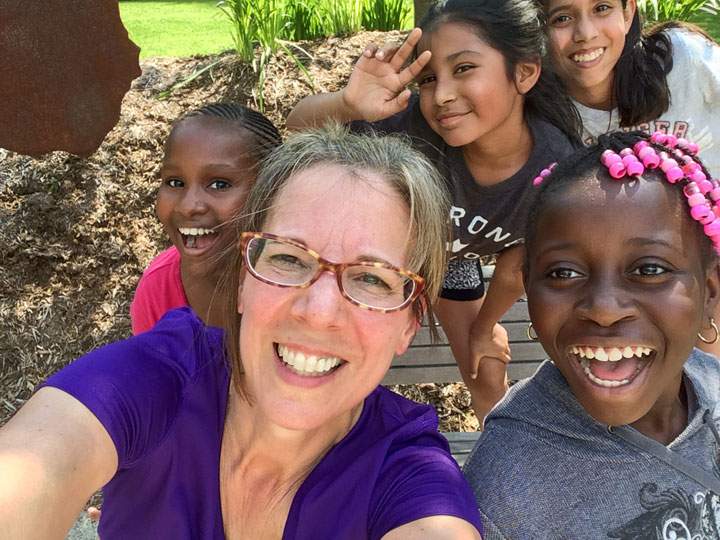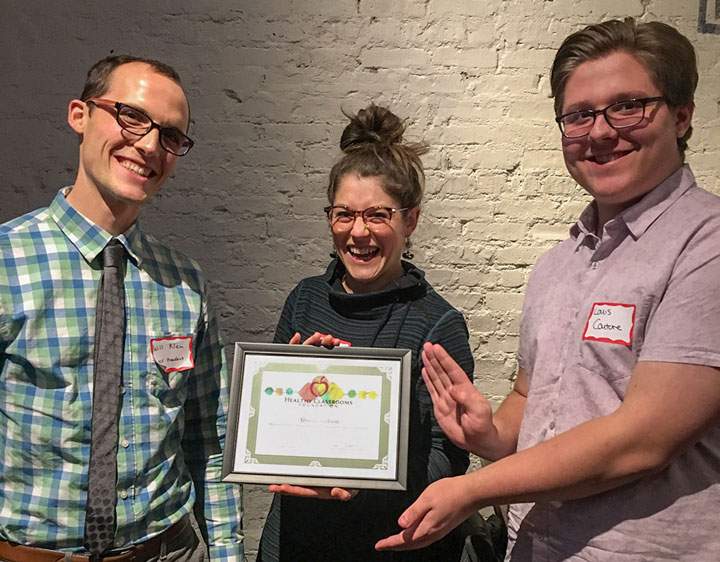Healthy Classrooms Foundation Celebrates Decade of Helping Youth Stay Well
If asked to imagine what the field of medicine looks like, people may envision an average clinic visit or busy emergency room. But what visions come to mind when asked what public health looks like?
“Energetic second-and third-grade students practicing mindfulness,” or “a girls’ running club” might not be top of mind. But those scenarios are at the heart of public health and depict the mission of the Healthy Classrooms Foundation, which provides grants to make such programs possible.

University of Wisconsin School of Medicine and Public Health students — including Ben Weston, MPH ’10, MD ’11, and Shaun Yang, MD ’10 — established the foundation in early 2008, to “bring public health to the public.” They had been inspired by the school’s transformation into the nation’s first integrated school of medicine and public health a few years earlier.
The foundation has flourished due to the efforts of volunteer student leaders and members from throughout UW–Madison. Today’s leaders are thrilled with the program’s longevity and the numerous grants it has shared.
Ross Laurent, past president and a fourth-year medical student, lauds the board members and financial sponsors who support the foundation’s activities. In addition to funding grants, the organization holds a spring Healthy Classrooms Symposium, which includes talks by public health advocates on topics of interest to school personnel and the public, and a fall Award and Donor Event to bring together people who receive grants and who donate funds. Major sponsors include the American Family Children’s Hospital, the UW School of Medicine and Public Health, Epic Systems, health insurance companies and individuals.
Making a Positive Impact
The program’s success shines brightest through the smiles of youth throughout Wisconsin, who may not even know it exists, but whose teachers are keenly aware of its impact. For instance, Madison teachers Jemma Sepich and Hope Yates celebrate the results of grants in their own classrooms.
Sepich is a dual-language immersion teacher at Chavez Elementary who was exploring ways to bring wellness-related activities to her students when she learned about the Breathe for Change curriculum, in which a colleague had become certified.

“I thought that would help my students learn about their physical, emotional and social needs,” says Sepich, adding, however, that the cost of training, the curriculum and related materials made it seem prohibitive until another teacher told her about the Healthy Classrooms Foundation.
Sepich also purchased, out of pocket, a subscription to a guided meditation audio program, yoga mats and other props, noting, “I love to use books to teach the yoga poses because the kids connect well that way.”
Grateful for the grant and now fully trained, she is incorporating Breathe for Change, yoga and meditation a few times each week in her classroom of 18 third-grade and 17 second-grade students. She has seen a drastic reduction in students’ behavior referrals to the school office.
“Students seem to really enjoy this. It helps them find ways to calm themselves and refocus,” says Sepich, adding that students often face difficult situations outside of school. “Sometimes they even ask if they can take a break and go breathe.”
Plus, she adds, “If I am a happy, calm teacher, the kids do better in school.”
Further, Sepich is teaching other staff how to use and teach chair yoga and mindfulness.
“My hope is that teacher by teacher, classroom by classroom, I can offer Breathe for Change ideas that help make each day a little easier and more mindful,” says Sepich. “I believe you can forever change the lives of children by giving them tools they need to handle whatever life throws at them.”
Yates, a teacher at Hawthorne Elementary, received a Healthy Classrooms Foundation grant to help fund a running club for fourth-and fifth-grade girls. About 35 have participated for the past six spring seasons.

Teachers and staff members are the volunteer coaches who take turns teaching 30-minute lessons — about topics such as bullying, body image, self-esteem, the value of community spirit, building friendships and making healthy choices — followed by 40-minute, small-group runs. The grant helps provide running shoes, as well as opportunities for the girls to volunteer at a 10K run and participate in a 5K run.
“Our goal with the Hawthorne Girls Running Club is to empower young women so they are equipped to make healthy life choices in middle school, high school, and post-graduate life,” explains Yates. “Many of our runners say they’ve learned more about themselves through our program, made new friends, learned how to prevent bullying and learned how to manage their emotions.”
Referring to a session when students viewed pictures of runners with attitudes ranging from happy to frustrated, fifth-grade student Safiyyah Cham says, “Before we started running, we did different lessons, and I liked the one when we chose who we would like to run next to or which runner you would want to be.”
Another fifth-grade student, Yadhira Bautista, says, “I learned that you have to work with others to have fun and encourage others. You also have to have strategies when you’re running, like to go the same pace and not too fast.”
Public Health Allies
While reflecting on the annual grant applications she opened over the past two summers, Mina Shahlapour, foundation co-vice president, saw great examples of ways applicants are aiming to bolster Wisconsin youth. Now a second-year medical student, she was inspired to volunteer for the past two years to put in motion some things she had learned while working on a UW–Madison global health certificate.
“We learned that while medical determinants can be influential parts of health and wellness, people in our city, state and nation deal with many barriers outside of the clinic walls,” she says, noting the importance of learning what prevents people from living the healthiest lives they can.
“The Healthy Classrooms Foundation allows people, in their own communities, to fuel the fires of change that need to be made,” she says. “Educators best understand their students and the gaps that exist in their communities. They are public health allies.”